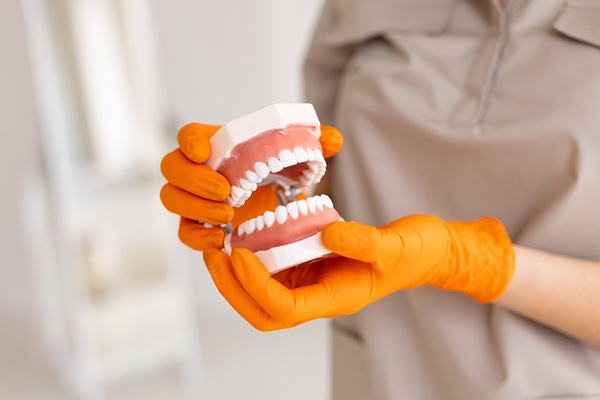3 Tips to Deal with Receding Gums

Having receding gums can be a serious concern for your oral health and overall wellness. This can also be a cosmetic issue and hinder your smile. If your gums are receding, make sure you get in touch with your dentist. There are some treatments available to help correct this problem. You can also change your habits and do things on your own to have healthier gums.
Good gum care and why it is important
Gums play a critical role in a person’s dental health. This soft tissue in the mouth holds the teeth in place. Regular brushing and flossing will keep gums healthy and strong. These activities prevent the buildup of bacteria on the gumline and teeth. In turn, this will reduce the person’s risk of developing plaque and tartar, which will keep decay and gum disease away.
Gum disease is a significant concern for a person’s oral wellness. At advanced stages, gum disease can cause this tissue to pull away from the teeth, leading to tooth loss. Bone loss can eventually occur too. Gum disease can also introduce infections in the mouth, which can eventually spread throughout the body.
How receding gums can happen
As the gums begin to pull away from the tooth, it exposes more of the tooth. Pockets can then form, and bacteria are more prone to hide in these areas. Gum recession is a common cause of gum disease and tooth decay. Genetics and changes in hormones can cause gums to recede. However, improper oral health care is the main reason this happens. Not flossing or brushing enough or even flossing and brushing too vigorously can lead to recession.
Education and implantation of good habits
When receding gums are at their beginning stages, changing dental habits can stop the gums from pulling away. A visit to the dentist’s office is a good first step. The dentist and hygienist can demonstrate the proper techniques for brushing and flossing. The patient may learn how often and how long to brush and floss and what corrections can help.
Deep cleaning
A mild case of receding gums can be troubling and requires more than more effective brushing and flossing. The dentist or hygienist will likely have to do some in-depth cleaning of the teeth and gums. Two treatments — root scaling and planing— can help to stop gums from receding. These processes involve removing plaque and tartar from the gumline and teeth to stop the spread of bacteria. The dentist will fold back the gums and clean out any bacteria. Then the dentist places the gums back over the roots.
Tissue graft
In more serious situations of receding gums, surgery may be necessary. The dentist will cut a flap of skin at the roof of the mouth and remove soft tissue underneath. The dentist then grafts this tissue to the gums surrounding the tooth root. If there is enough tissue in other areas around the teeth, the dentist can use this for the graft.
Nothing to ignore
If you have receding gums, do not put off treatment. Make an appointment with your dentist today if you have concerns. Together, you can come up with the right strategy to improve your oral health. You can have peace of mind to know that help is available for this condition.
Are you considering treating receding gums in the Saratoga Springs area? Get more information at https://www.mysaratogadentist.com.
Check out what others are saying about our services on Yelp: Receding Gums in Saratoga Springs, NY.
Recent Posts
Receding gums are a condition in which the gum tissue pulls away from the teeth, exposing the roots, and it may harm the underlying health of your teeth and the appearance of your smile as a whole. Healthy gums are essential for supporting your teeth and lowering the risk of infection and tooth loss.Even though…
Receding gums can be a symptom of gum disease, or they can be caused by poor oral hygiene habits, like brushing too hard. Some people also have a genetic predisposition toward developing gum recession. Regardless of the cause, gum recession leaves teeth roots exposed to acids in the mouth. This increases their risk of decay,…
The National Institutes of Health conducted a survey about receding gums. The results show that half of the adults in America have at least one area of gum recession. This study shows how prevalent this condition is, yet many people do not know when to seek treatment. Additionally, many people do not understand the factors…
Receding gums expose the teeth roots, making them vulnerable to heat, cold, pressure, corrosion, and harmful mouth bacteria. The exposure also makes your teeth appear longer than they should be, which can affect the look of your smile.A dentist might recommend gum grafting to correct gum recession. Here is how to know if a gum…


